To update to Windows 11 if your computer is still in BIOS mode, you must enable UEFI and Secure Boot. Here’s how.
Key Point: On Windows 10, restart the device under “Windows Recovery Environment” settings, go to Troubleshoot > Advanced options > Command Prompt, and run “mbr2gpt /validate” and “mbr2gpt /convert” to convert from MBR to GPT for Windows 11. Once the conversion is complete, turn on Secure Boot and UEFI mode in the BIOS.
If you intend to upgrade to Windows 11 and enable Secure Boot, the computer will most likely no longer boot because the hard drive is using the MBR (Master Boot Record) partition table rather than the GPT (GUID Partition Table), which is required to use Windows in UEFI (Unified Extensible Firmware Interface) mode and enable Secure Boot.
This isn’t a problem if you’re going to conduct a clean installation because the prior setup will be deleted, but it will be a problem if you’re trying to do an in-place update because you want to maintain your files, settings, and apps. However, there is a simple solution. Windows 10 offers a utility called mbr2gpt that allows you to convert a disc with an MBR partition to GPT. It is accessible from the Advanced Options menu.
This post will teach you how to convert an MBR disc to GPT in order to correctly move from BIOS to UEFI and allow Secure Boot to upgrade a Windows 10 setup to Windows 11.
Convert a Windows 10 MBR drive to a GPT drive so it can be used with Windows 11.
If you activated Secure Boot and converted to UEFI, you must return to traditional BIOS to allow the device to boot into Windows 10. You can follow the same steps as before. Then, boot the device into the Windows Recovery Environment (WinRE) and use the mbr2gpt command-line programme to convert the MBR disc to GPT. The Settings app is the most convenient method to access the recovery settings, but there are various additional options.
Step 1: Access WinRE
- Open Settings on Windows 10.
- Click on Update & Security.
- Click on Recovery.
- Click the Restart button in the “Advanced startup” section.
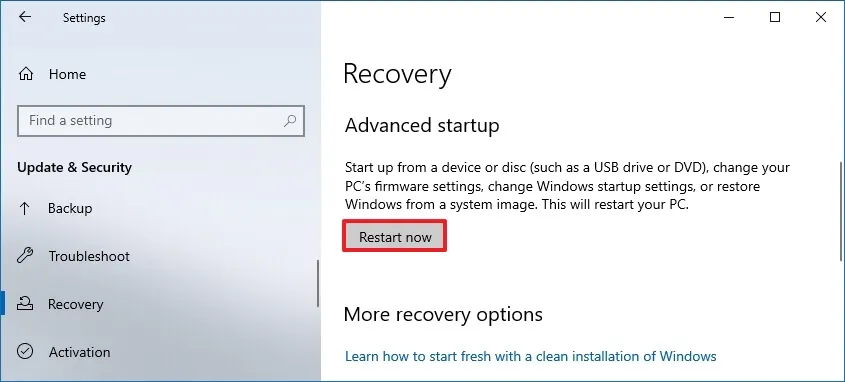
When you finish the instructions, this action will log you out of your current session and allow you to access the startup experience.
Step 2: Using the mbr2gpt tool, convert the MBR disc to GPT.
Follow these procedures to convert an MBR drive to a GPT drive:
- Click on Troubleshoot.
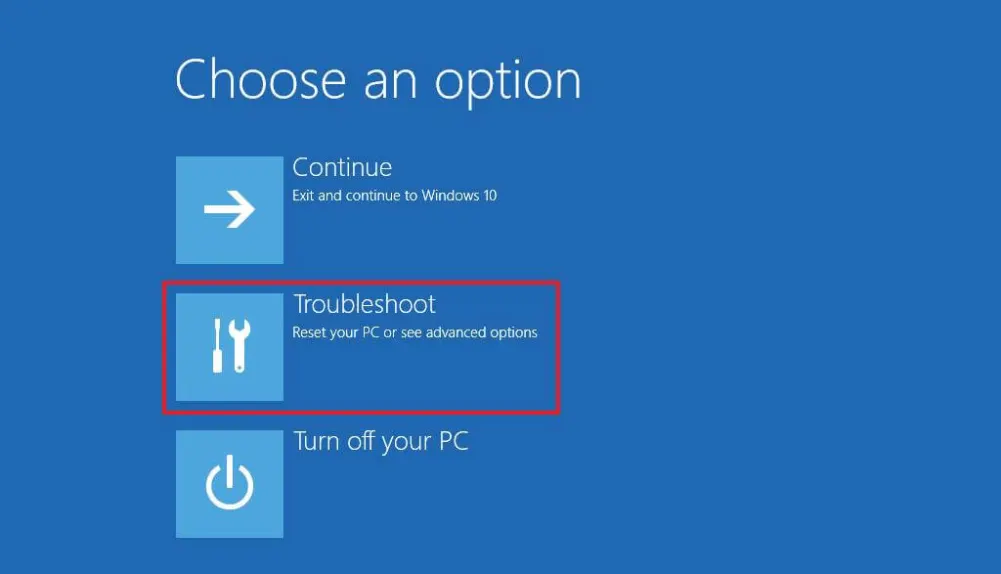
- Click on Advanced options.
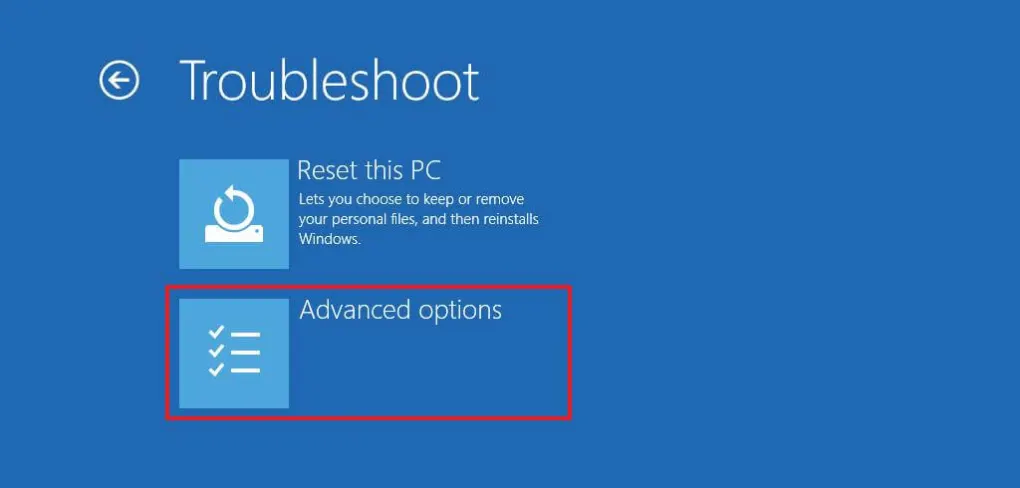
- Click the Command Prompt option.
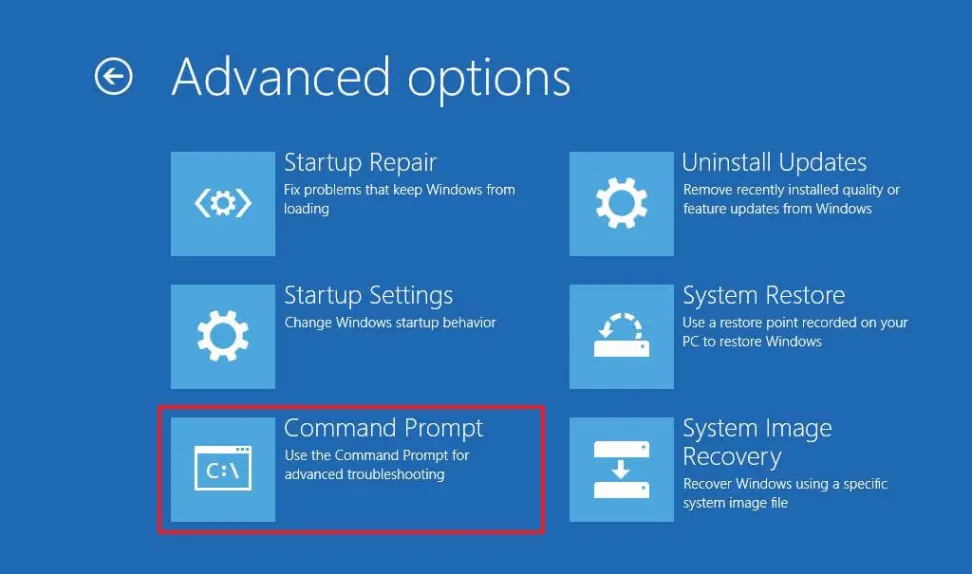
- Select your administrator account and sign in (if necessary).
- To confirm that the drive may be converted, use the following command and press Enter:
mbr2gpt /validate
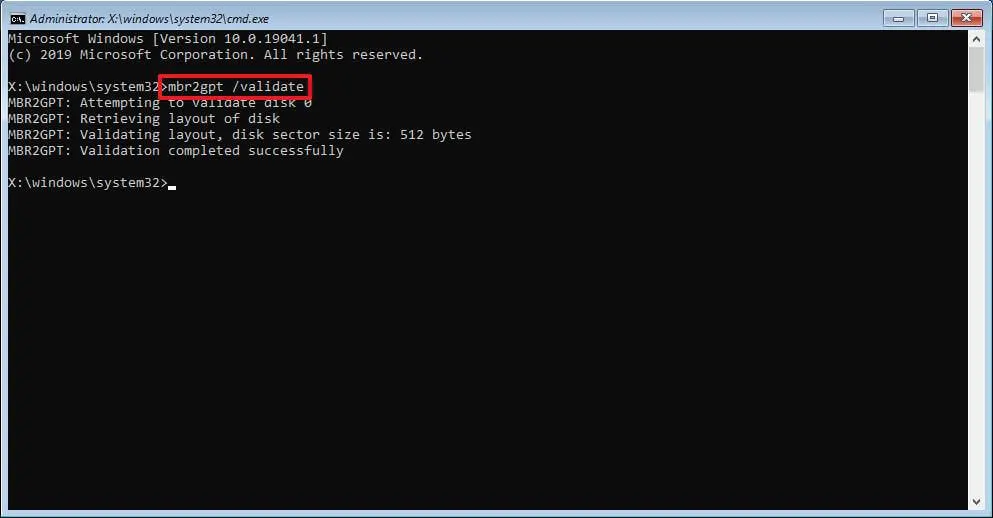
- To change the system drive from MBR to GPT, enter the following command and press Enter:
mbr2gpt /convert

- To close the console, enter the following command and click Enter:
exit
- Select the Turn off your computer option.
Unless you adjust the command and indicate which drives to convert, the mbr2gpt command-line utility will only convert the system drive to GPT.
The final step is to convert to UEFI firmware mode and activate Secure Boot to fulfil all Windows 11 requirements.
Step 3: Change the BIOS setting to UEFI and activate Secure Boot.
Follow these procedures to convert from BIOS to UEFI and activate Secure Boot for Windows 11:
- Power on firmware.
Please keep in mind that the processes for accessing and modifying the firmware settings will differ depending on the manufacturer and computer model. More particular information should be obtained from the device manufacturer’s support page. During startup, you may usually access the firmware by pressing the Delete, Esc, or one of the Function keys.
- Depending on your motherboard, navigate to the boot sequence, advanced, or boot settings page.
- Switch off the traditional BIOS and activate UEFI mode.
- Navigate to the advanced, security, or boot settings page, depending on the motherboard.
- Choose the “Secure Boot” option, then choose Enabled.
After you do the procedures, the machine should boot properly, allowing you to resume the Windows 11 upgrading process with UEFI and Secure Boot enabled.



[…] Because the limitation is 128 partitions, if the hard disc is initialised as GUID Partition Table (GPT), you can create as many main partitions as needed. (You may also use these steps to convert an MBR disc to a GPT drive.) […]